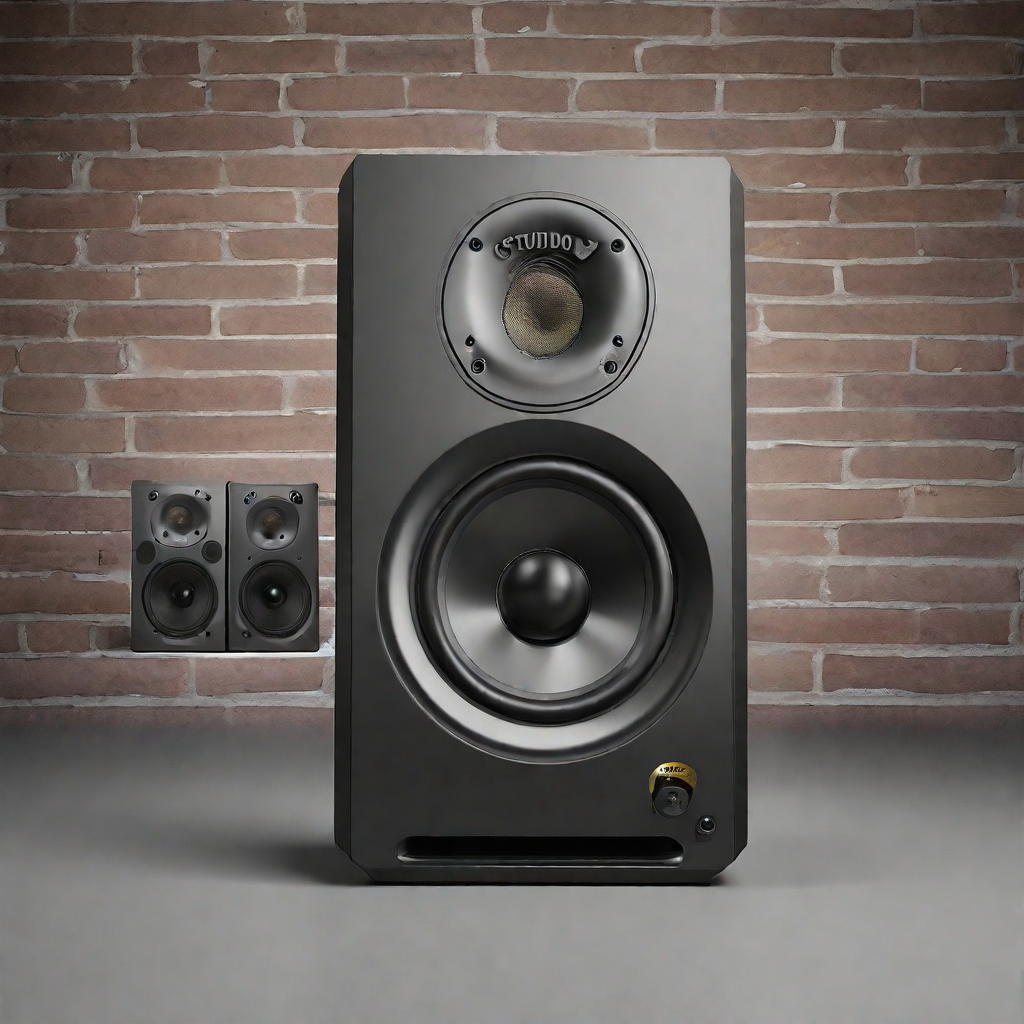
When building a studio, one of the biggest decisions is what size monitors to get. Should you go with compact 5-inch speakers or larger 8-inch models? The right size studio monitors can make mixing a pleasure, while the wrong size can hinder your productions.
Below we’ll compare the key differences between 5-inch and 8-inch studio monitors. You’ll discover the advantages of each to find your best fit.
Key Factors in 5-Inch vs 8-Inch Monitors
There are a few important considerations when choosing between 5 and 8-inch monitor speaker sizes:
Low-End Frequency Response
Larger woofers generally reproduce deeper bass frequencies. 8-inch monitors may hit down to 35Hz, while 5-inch speakers stop at 50Hz. This matters for mixing low-end elements.
Output Volume
Bigger speakers with larger woofers can achieve higher maximum loudness like 105dB, compared to smaller models around 96dB. Volume plays a role in achieving appropriate monitoring levels.
Ideal Room Size
The optimal room for 8-inch monitors may be 150 square feet or larger. Five-inch speakers often work best in smaller 100 square foot studios. Match the speaker size to your control room.
Nearfield or Midfield
Five-inch monitors are ideal nearfield positioned just 1-3 feet away. Eight-inch speakers can be placed further as midfield monitors if needed.
Budget
Good 8-inch monitors often start around $300 each, while quality 5-inch speakers can be found for under $200 each. Larger woofers cost more to manufacture.
Benefits of 5-Inch Studio Monitors
Five-inch studio monitors offer some distinct advantages:
Accuracy in Smaller Rooms
Properly placed, 5-inch monitors provide greater accuracy for mixing in small home studios around 10 x 10 feet. Their shorter low-end extension prevents exaggerated bass buildup.
Enhanced Imaging
With tight placement between 1-3 feet away, the narrow distance between 5-inch speakers enhances stereo imaging precision for panoramic mixes.
Affordability
You can find high-quality 5-inch studio monitors from reputable brands starting at around $150-200 each. This makes achieving great accuracy on a budget easier.
Portability
Thanks to their compact size, 5-inch monitors are simple to transport for mobile production in smaller spaces.
Overall, 5-inch monitors are ideal for producers working in constrained home studios that still want faithful accuracy. Their cohesive sources and affordability make them a popular choice.
Benefits of 8-Inch Studio Monitors
Moving up to 8-inch woofers has some notable benefits:
Enhanced Low-End Response
The larger 8-inch woofer cones produce deeper low-frequency extension down to 35Hz or lower. This aids mixing for club sound systems.
Higher Output Levels
Bigger speakers can achieve loudness up to 110dB, allowing appropriate monitoring levels with headroom. This more closely mirrors live sound levels.
Bigger Sweet Spot
Due to increased woofer size, the listening sweet spot is larger on 8-inch monitors. This allows more flexibility in room positioning.
Midfield Monitoring
You can place 8-inch monitors further away as midfield monitors, thanks to their wider dispersion and loudness. This is ideal for larger control rooms.
For producers wanting to hear the full frequency spectrum at louder volumes, 8-inch monitors are the way to go. Their wider sweet spot also accommodates more listeners.
Key Brands for 5-Inch and 8-Inch Monitors
There are dozens of monitor brands, but a few key names stand out:
Five-Inch Monitors
- Yamaha HS5 - $200 each
- PreSonus Eris E5 - $170 each
- JBL 305P MkII - $300 pair
Eight-Inch Monitors
- Yamaha HS8 - $375 each
- Adam Audio T8V - $700 each
- Kali Audio LP-8 - $400 each
Stick with established pro audio manufacturers for the best quality and reliability.
Positioning and Acoustic Treatment
To optimize your monitors, proper setup is essential:
- Place monitors at ear height angled in toward your mix position.
- Keep monitors away from walls to avoid bass buildup.
- Add acoustic treatment behind and beside monitors to prevent reflections.
- Ideally use monitor stands with isolation pads to decouple from your desk.
Follow these best practices with 5-inch or 8-inch monitors.
Treating first reflections and rear wall will improve accuracy immensely.
Active vs Passive Monitors
Another key decision - active/powered monitors have built-in amplification, while passive monitors require an external power amp.
Powered monitors provide simpler setup and more flexibility in placement. But you can later upgrade just the amp driving passive speakers.
Generally, go with active/powered monitors which are now the studio standard in 5 and 8-inch models.
Conclusion
Choosing the right monitor size heavily depends on your room size, mixing style, ear sensitivity and budget. Hear them for yourself before buying if possible.
Overall, 5-inch monitors excel for smaller, tight spaces, while 8-inch monitors reproduce a bigger frequency range at higher levels.
Invest in quality monitors from reputable brands, position them correctly, and add acoustic treatment to maximize your mixes. Then you can achieve accurate results on any budget.



